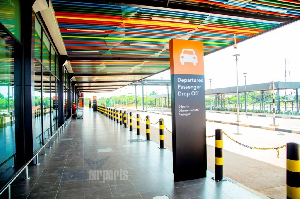Oxfam-Ghana has supplied Information Technology (ICT) equipment and its accessories to twelve basic schools in Savanah and Northern regions.
The learning kits, estimated at 61,285.73 Euros, include ‘Ideasbox’ and ‘Koombooks’ which are mobile multimedia centres that could easily be installed.
The kit’s users will have access to a satellite internet connection, digital server, a power generator, tablets and laptops, HD cameras, large HD screen among others.
The effort is part of Oxfam pilot project dubbed: “Innovation Transformative Education (ITE)”, tailored to the needs of girls and seeks to remove barriers facing adolescent girls in rural communities.
Madam Fauzi Abdul-Rahm, Programme officer of ITE, said two Ideasboxes would be given to the Oxfam piloted schools that include Sawla Girls Model Junior High School in Savana and Kpandai Girls Model Junior High School located in the Northern Region.
Five of the Koombooks will be handed over to non-piloted public schools in the Sawla District and another five to similar schools in the Kpandai District.
She said the training offered to selected teachers on the use and management of the equipment would help them deliver successful lessons and help girls to become independent thinkers.
“The main objective of this project is to improve teaching and learning in the schools using ICT to complement government policy on education”.
She said the two pilot schools have been receiving assistance from Oxfam and ‘Library without Borders’ and the assistance include special tuition to improve girls’ enrolment in schools.
Mr Johnson Naapi, Programme Officer for Education Policy at Oxfam-Ghana, said following the successful implementation of the two pilot model girls schools in the two districts, other districts have adopted 58 public schools as girls’ model JHSs in their areas.
He said the learning methods adopted by the programme is ‘learner-centred’ and this allows school children to discover things for themselves through practice.
He said the single-sex environment is proving to be ideal as the girls feel more comfortable with learning at their own pace and developing their talents.
Ms Theresa Tantuoyire, Headmistress of Sawla Model Girls JHS, lauded the project saying it promoted discipline among students and teachers and moulded students to be confident and assertive.
She said the model has helped break some cultural barriers like teenage marriages and pregnancy.
“Some of the girls were given out in marriage, some got pregnant, but it got to a time some of these things stopped because of the disciplinary measures we have put in place here,” Ms Tantuoyire said.
She said parents have also come to understand that when girls have quality education, they often excel in the final exams more than their male counterparts.
The average girl in Ghana only receives four years of education, according to Oxfam report, which also names early marriage, pregnancy, poverty, and sexual harassment as the main obstacles that has led to many girls to drop out of school before the end of their junior high level.
Regional News of Wednesday, 2 October 2019
Source: ghananewsagency.org

















